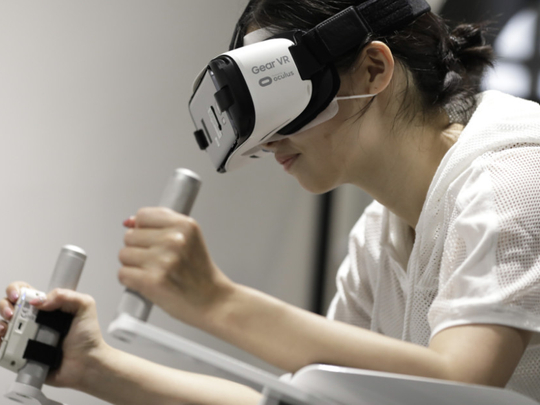
Dubai
Data consumption by wireless virtual reality headsets (smartphone-based and stand-alone) globally will grow by over 650 per cent over the next four years to over 21,000 Petabytes (PB) in 2021 from nearly 2,800PB this year.
James Moar, research author for ‘Virtual Reality Markets: Hardware, Content & Accessories 2017-2022’ at Juniper Research, said that data consumption will reach over 28,000PB when combined with traffic generated by VR headsets tethered to PCs and consoles, placing significant additional strain on both wired and wireless networks.
He said that VR requires fast data speeds to stream content effectively and, by 2021, the data demand of each VR device is expected to exceed that of 4K. This will be driven by the need for higher image quality and frame rates, a developing problem as VR becomes more mainstream.
“While we expect most streamed VR to be consumed over Wi-Fi, the cellular networks will also need to provide extra capacity to handle additional data consumption,” he said.
In order to make VR more accessible, the report recommends bringing network operators and broadband providers into the VR standards conversation now. Juniper argues that the future data demand needs to be taken into account when considering specifications like minimum frame rate and resolution. In addition, technologies which reduce the amount of data processing, like foveated rendering, need to be rolled out and become universal.
Games to date have been the focus of most of the VR industry, with immersive gaming experiences being its goal. Games are typically limited to a single VR platform, although some cross-platform sales are starting to emerge. With the exception of a few titles on console VR, the majority of titles are operating below the standard for top-tier game prices. It will be some years before the market is big enough to support AAA content development.
However, several multimedia companies are now producing content for VR, as well as adapting existing content for the platform. The majority of media consumed through VR is not from multimedia companies, but either through streaming services (such as Netflix or YouTube) or stand-alone apps but Juniper expects that the larger media companies will need to use these channels, at least in the short term, to gain an audience.
In addition to providing 360-degree experiences of traditional film and storytelling, there are some indications of VR film beginning to provide its own forms of storytelling; that of reactive media.
Moar said that social VR is on the rise. Facebook and WeChat are currently developing VR platforms and several VR games, most notably Star Trek: Bridge Crew, have social elements. These platforms are designed to bring more users into the VR ecosystem by offering new social interactions.
“VR is currently seen as very isolating. The promise of having new worlds to explore is much more compelling when other people can share the experience, which needs social games and social interfaces, as well as the development of cross-platform standards,” he said.











